Diving and Snorkelling in the Solomon Islands
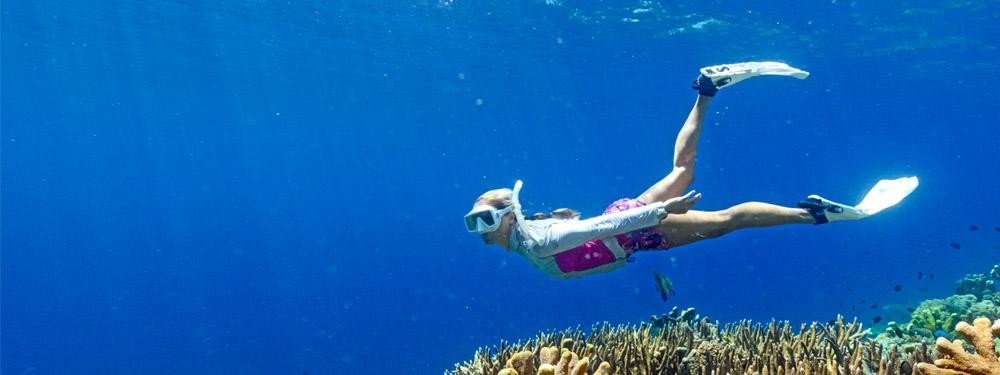
There are almost no words for how spectacular the diving is the Solomons. Our beautiful piece of paradise has not yet been widely discovered so lucky divers, freedivers and snorkellers who visit us will have the place to themselves.
The Solomons is in a unique location called the Coral Triangle. We have over 5,000 square kilometres of reef which is virtually untouched and unaffected by human interference. You can find a kaleidoscope of hard and soft corals, large sea fans and huge numbers of reef fish. You might also see manta rays, sharks and dolphins on their migratory route.
When is the best time to dive?
You can dive all year round but conditions are best between April and November when visibility can exceed 40 meters. The water temperature is usually between 26-30 degrees and the diving is suitable for all levels, from novices to very experienced divers.
What sort of diving can I do?
We’ve got plenty of WWII fighter planes, tanks and more for the wreck divers. If you prefer macro diving, you’ll like our pygmy seahorses, spiny lobsters and other little critters. And we also have hammerhead sharks, reef sharks, eagle rays, barracuda, fluorescent turtles and pristine reefs for you to explore.
There are also a number of liveaboard operators who operate out of Honiara. They provide a comfortable base to enjoy everything the islands have to offer. You’ll see the best of the Solomons by being out on the water and diving in remote locations.
Where should I go wreck diving?
Iron Bottom Sound
Just off from Honiara is the area known as Iron Bottom Sound. There are over 200 ships and 690 aircraft in this area. Many parts are too deep to dive at around 600 metres but there are still some spectacular dive sights closer to the shores of Ngella Islands and Guadalcanal.
There are 3 Japanese wrecks just off Bonegi Beach - the locals call the most popular sights Bonegi 1, 2 and 3 and can be reached as a shore dive or by boat. The Hirokawa Maru, better known as Bonegi 1, is the most popular as there are lots of swim throughs and torpedo holes in the wreck. You’ll also see sharks, turtles, rays and snapper at this site. Kinugawa Maru, better known as Bonegi 2, can be enjoyed by everyone. The wreck is very pretty as it’s covered in soft coral and anemones and you’ll probably see lots of blue spotted rays on the sand. Kyusyu Maru in better known as Bonegi 3 lies in 7-47 metres of water and you can see the remnants of the major bombardment on this site.
Munda
There are at least 11 WWII wrecks that you can dive from Munda. A couple of highlights are the Kashi Maru, the F4F-4 Wildcat and The Airacobra.
The Kashi Maru lies at 17 metres and is about 45 minutes from Munda by boat. This wreck is accessible to all but experienced divers can also see the engine room which is completely intact and considered one of the most preserved WWII wrecks anywhere in the world. You’ll also see lots of coral, clams, moray eels, octopus and much more on this wreck.
Just next to the Kashi Maru is the US fighter plane F4F-4 Wildcat which lies upside down at 14 metres on a spectacular coral reef – Alice in Wonderland.
For those divers who are qualified for deep dives, we have the Koviki Corsair which is on pristine white sand at 51 metres. It’s fully intact and visibility of 40-50 metres is common. You’ll also see Napoleon Wrasse and the giant Grouper that lives at the wreck.
These are just some of the many amazing wreck dives from Munda and we have daily flights from Honiara to get you there.
Gizo
Gizo is another location that has something for everyone! The Toa Maru is only a 20 minute boat ride from Gizo and is one of the South Pacific’s most popular WWII wrecks. This wreck starts at 7 metres and goes down to 37 metres. You’ll be able to see the remnants of this vessel including a motorbike, tanks, saki bottles and office equipment. You’ll also be able to see turtles, rays and extensive coral garden.
There’s also an American Hellcat Fighter Plane for you to explore in 10 metres of water. Both snorkellers and divers can access this site and the plane is completely intact. This is one for the photographers as there’s plenty of light unlike some of the deeper dives elsewhere.
We have daily flights from Honiara to get you to Gizo.
Where should I dive to see sharks, rays and much more?
You just can’t beat the Western Province for diving. In addition to the WWII wrecks you’d be unlucky not to run into some of our underwater residents. If you’re not into diving, there are plenty of snorkelling options too.
Munda
The diving in Munda is magical with some of the most pristine sites in the world. Divers regularly see hammerheads, eagle rays, dogtooth tuna, reef sharks, moray eels, bumphead parrotfish, and napoleon & bumphead wrasse and barracuda.
If you prefer macro diving, you can see pygmy seahorses, nudibranchs, molluscs, anemone fish and spiny lobsters. The coral gardens and reefs are pristine because we are not on the main tourist trail.
Do a night dive and go looking for the biofluorescent Hawksbill turtle. This critically endangered species numbers have reduced by a staggering 80%. They give a bright green and red fluorescent glow at night.
We have daily flights from Honiara to Munda.
Gizo
Still in the Western Province and not far from Munda is Gizo where you will find some of the most exciting diving in the world.
In addition to the WWII wrecks you can see mantas between November and April. Perhaps you’d like to do a beach dive where you can see beautiful large fan corals, passing mantas and eagle rays and finish with nudibranchs as you climb the wall to finish your dive in a lagoon.
Mary Island
Also known as Mborokua, Mary Islands is the best site for divers who want to see barracuda, sharks and huge bumphead parrot fish. And don’t forget Mary Island is actually an extinct volcano. The best way to get to Mary Island is on a liveaboard from Honiara.
Where should I go cave diving?
Russell Islands (Leru Cut)
Leru Cut is probably the most famous diving spot in the Solomons. It is a long passage cut deep into the side of a small island. This dive has a depth of 12 metres and as you surface you’ll see huge trees and hear the sounds of the jungle.
Florida Islands (Twin Tunnels)
The Florida Islands have many excellent dive sites – one of the best being Twin Tunnels. Named after two vertical lava tubes, dive down to where they join and open up on the side of a reef wall at about 34 metres. The walls are covered in fans and coral which makes diving through them quite beautiful. You might be lucky to see pygmy seahorses, hairy squat lobsters, cuttlefish, octopus, eels and the occasional nurse shark.
Tours and Activities
Diving and Snorkelling in Seghe

Some of the most outstanding diving in the world, the perfect water clarity puts vibrant coloured corals, a multitude of marine life and outstanding wrecks on display. Learn to dive, join a snorkelling excursion or simply step off the pier into the beautiful lagoon.
Snorkelling in Suavanao

The area offers some amazing snorkeling opportunities with various soft and hard corals, World War II wrecks and tropical fish to find. A signature snorkel experience is the blue lagoon which looks like a volcanic hole. You will have the change to swim with friendly black tip sharks, sea turtles and manta rays.
Swim and Snorkel near Kirakira

Visit white sandy beaches and enjoy some of the best snorkeling in clear pristine clear waters, in easy reach of Kirakira, including the Three Sisters and Ugi Islands. There are also unique surfing breaks and snorkelling. Coral reefs abound, spend hours exploring and see an extraordinary variety of tropical fish, by motor boat from Kirakira Harbour.
Diving in Gizo

There are over 15 world class dive sites around the Gizo area ranging from manta ray dives, coral dives, and famous World War II relics including the renowned Toa Maru No. 2 Dive plus a host of Japanese and American fighter planes dive sites.
Tulagi Dive
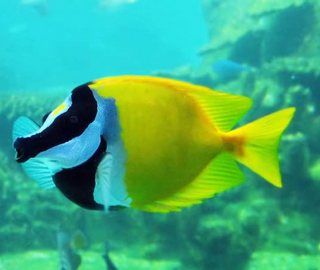
Iron Bottom Sound was the scene of some of WWII's biggest naval battles. It is the channel between Guadalcanal, Savo and the Florida islands and is the resting place for over 50 Japanese and Allied warships and fighter planes, hence the name "Iron Bottom". Noteable dives around Honiara include Hirokawa Maru, USS John Penn, and Kinugawa Maru. For the more experienced diver, try out the Aaron Ward in the nearby Florida Islands, the only diveable destroyer.
Attractions
Njari Island
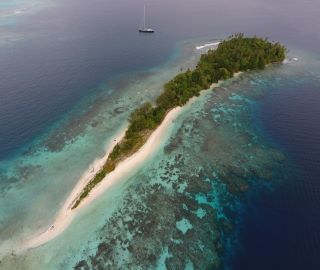
One of the Solomons most significant ecological sites, discover Njari Island and enjoy a swim, snorkel or relax surrounded by stunning natural beauty and a chef-prepared BBQ lunch.
Arnavon Islands
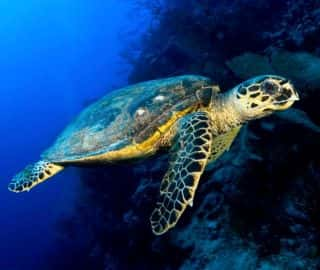
Located between Isabel and Choiseul Province, these four small islands are home to the largest rookery of the critically endangered Hawksbill turtles in the South Pacific. The Arnavon Community Marine Conservation Area was established to protect the remaining Hawksbill turtle population. Learn more about the turtles, swim, snorkel, relax or take a cultural tour.
Tetepare Island
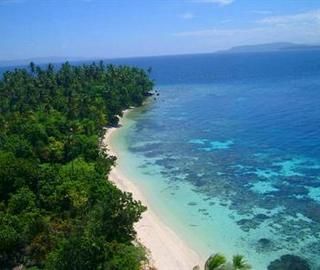
Tetepare Island is the largest uninhabited island in the South Pacific covering approximately 118 square kilometres. Tetepare has untouched rainforest, gorgeous coral reefs, captivating cultural sites and unique wildlife. Swim or snorkel in Tetepare’s beautiful lagoons, walk in the rainforest, bird watch, relax on the beaches or visit cultural sites from the island’s renowned head hunting days. The accommodation is in traditional Melanesian leaf houses and set either on the edge of the rainforest or shores of the lagoon.
Kennedy Island
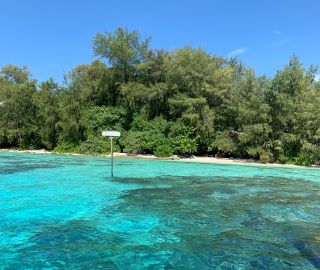
Explore this small Island where US president John F Kennedy and the crew of PT109 were ship wrecked during WWII. There is great snorkelling, hammocks to relax on and an area for a BBQ if you want to take a picnic.
Dugongs at Kagau

On your way to Arnavon Island, keep an eye out for dugongs (sea cows) who roam the waters around Kagau and pop up every now and then to breathe.
Arnavon Island
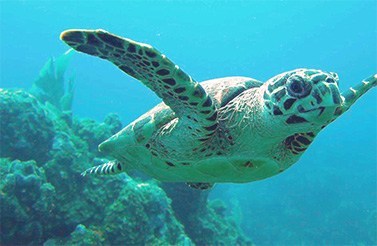
An eventful 1-2 hour boat ride through open seas and strong currents from Kagau will take you to Arnavon Island where you can experience the world reknown Arnavons Community Marine Conservation Area (ACMCA) which covers 40,000 acres, three small uninhabited islands, flourishing reefs, fish-filled lagoons and beaches that are home to thousands of egg-bearing turtles. All bookings are to be done through the Nature Conservacy office in Honiara. The best time to visit Arnavon Island is the turtle nesting season in June, July, and August.
Accommodation
Agnes Gateway Hotel
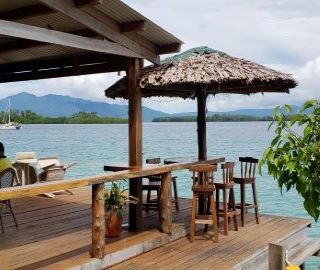
On the banks of Munda Harbour with views over the lagoon and an open decked restaurant and bar. Stay amongst divers and anglers, with Dive Munda also on-site. The property has hotel room and cottage style accommodation and is perfectly located next to the market square and only a 3 minute walk from Munda Airport.
Uepi Island Resort
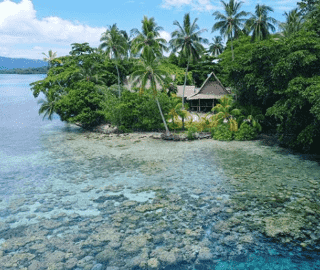
A top dive and snorkel destination globally! Uepi has so much to offer with its perfect coral formations, outstanding marine life, and beautiful natural lush jungle. The island is 2.5km long with six traditional style bungalows, two units, and two guest rooms. With a maximum of 26 guests, feel relaxed and part of the family.
Yawana Dive & Bungalows
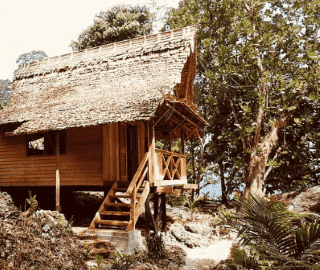
This budget accommodation caters to only a small number of guests at any one time. There is a traditional bungalow, the larger Den house or the Bunkroom which has single beds. The dive shop is on-site and convenient for those who want to get straight into the water once you wake up.
Bilikiki Cruises
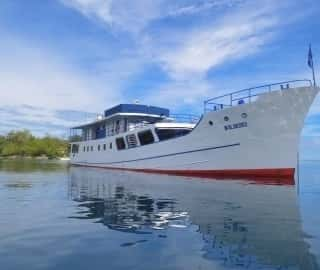
Visit a range of rarely visited dive sites, during an exclusive 7 or 10-night liveaboard cruise with Bilikiki. Visit the Russell Islands, Mary Island, and the Florida Islands to dive spectacular reefs and discover the natural diversity and the traditional village life the Solomon Islands are renown for, in absolute comfort.
Sanbis Resort
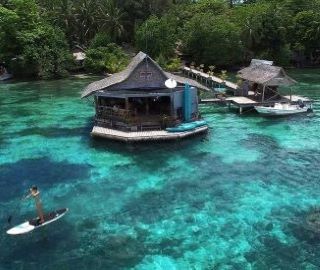
After just a 7 minute boat ride from Gizo Airport you will arrive to warm smiles and a well stocked bar on the dock. Each traditional style bungalow has its own private beach with stunning views across the lagoon. Whether you try the numerous water sports on offer or just relax there will be no escaping the beauty of Sanbis.
